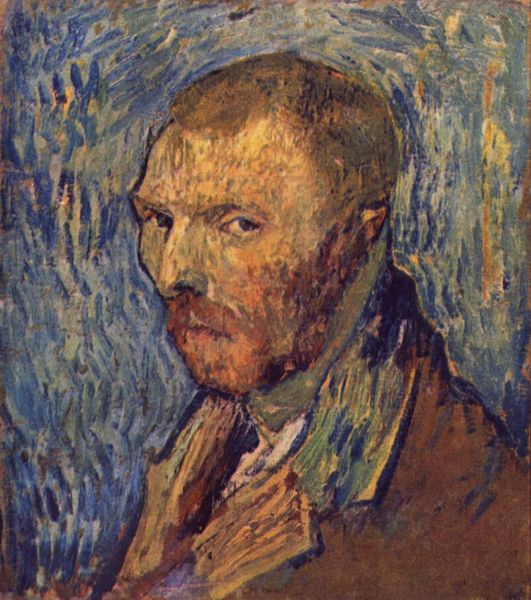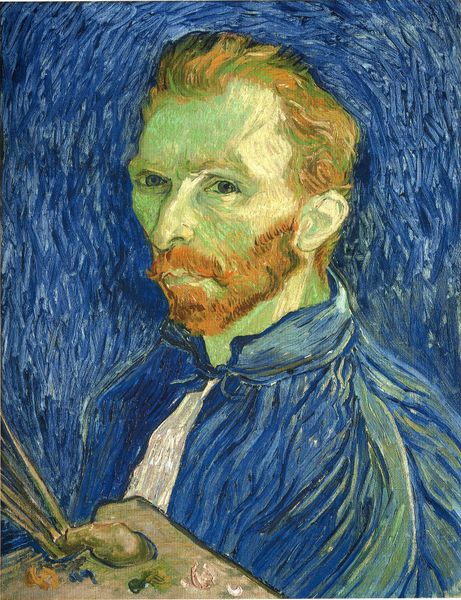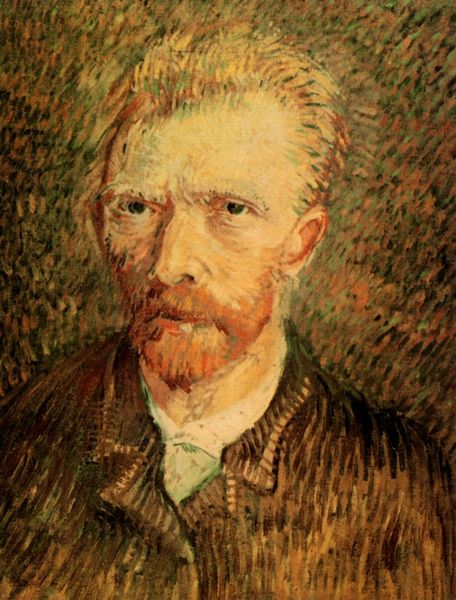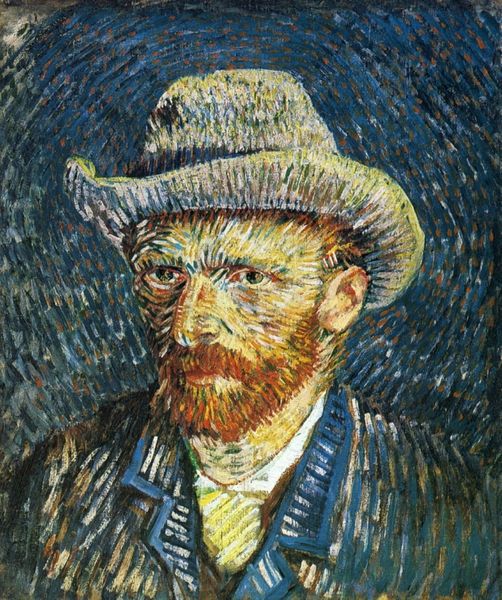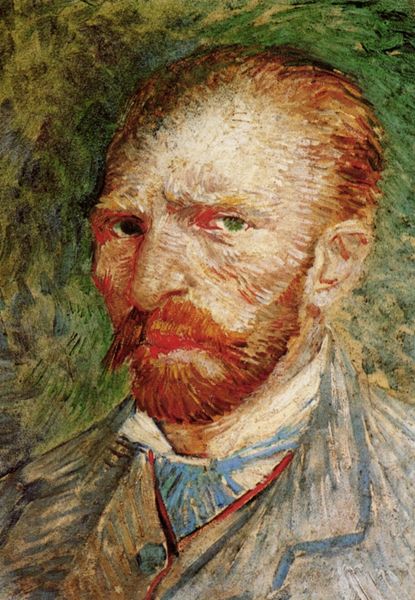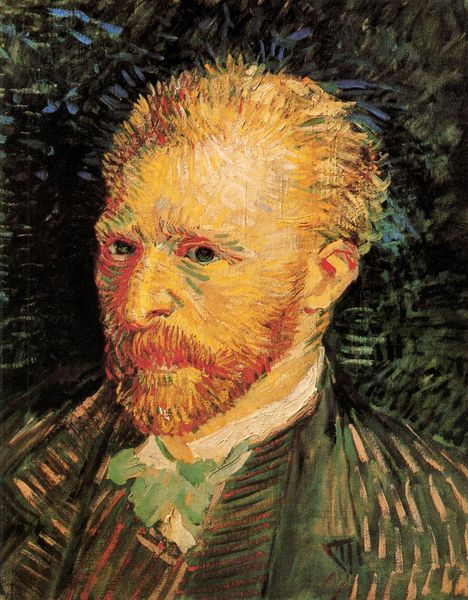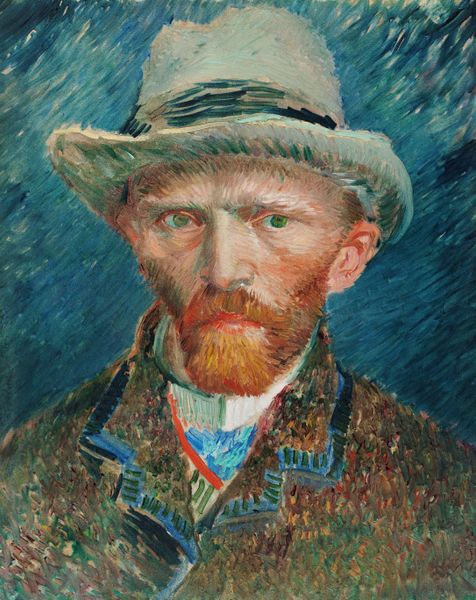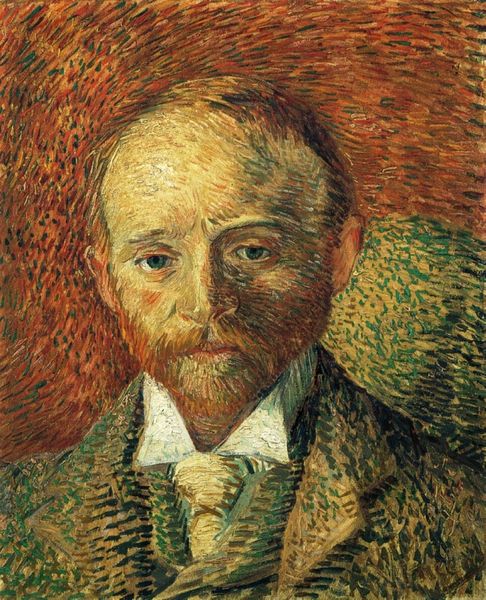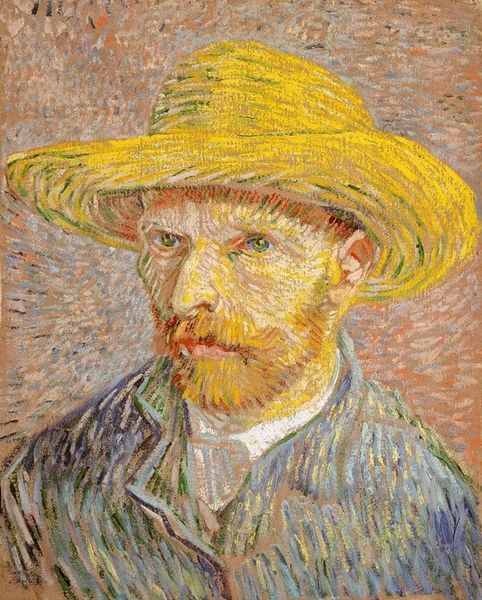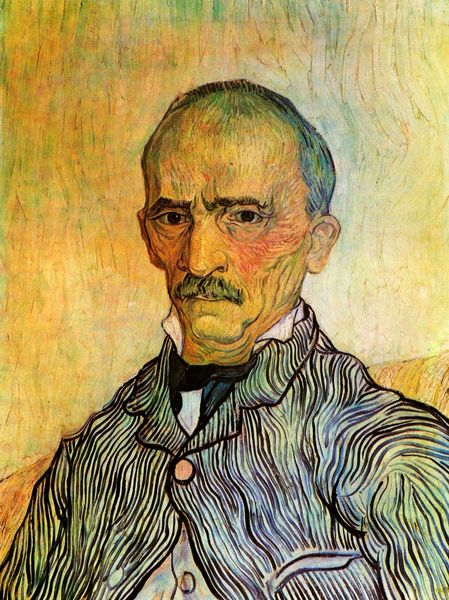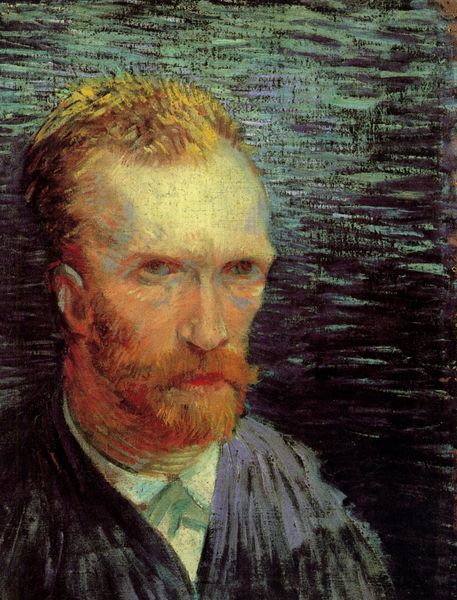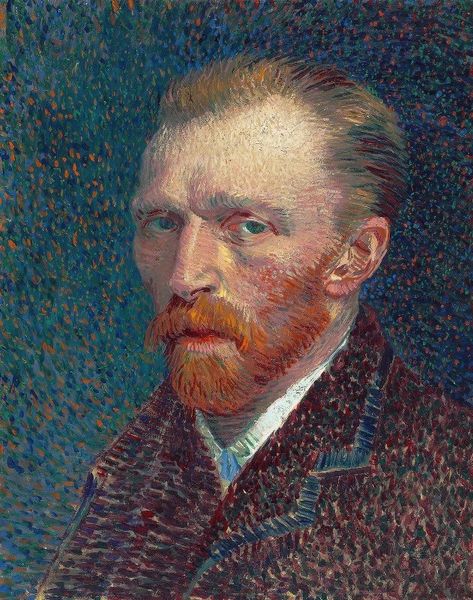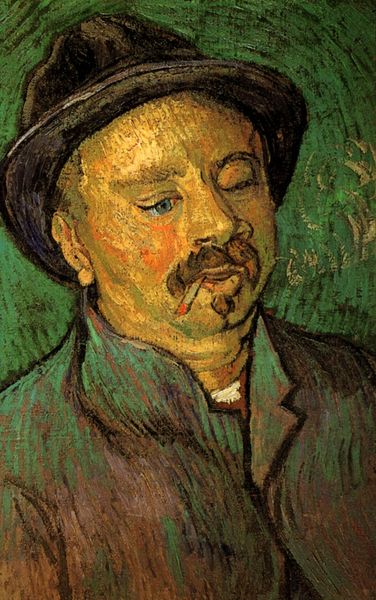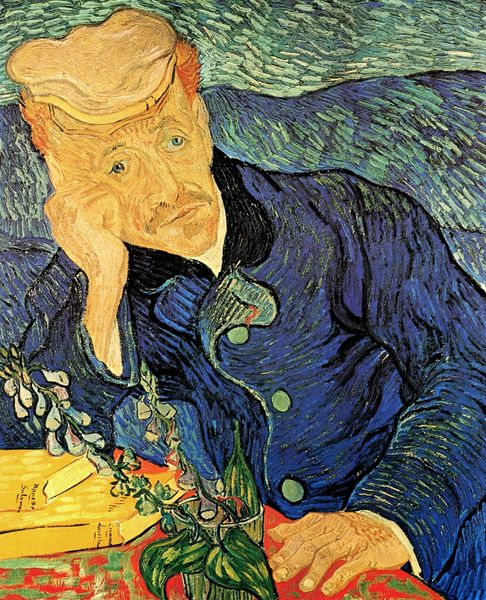
painting, oil-paint
#
portrait
#
self-portrait
#
painting
#
impressionism
#
oil-paint
#
figuration
#
post-impressionism
Dimensions: 65 x 54 cm
Copyright: Public domain
Artist: Oh, hello there. When I look at this Van Gogh, it feels like gazing into a churning ocean of the soul. He really throws himself into it, doesn't he? Art Historian: Indeed. This is his “Self-Portrait” from 1889, painted while he was at the Saint-Paul-de-Mausole asylum. A crucial moment, both personally and for his art historical reputation. Artist: You can practically taste the turpentine! All those wild swirls… Is it the sky behind him, or just his mental state made visible? It's both, isn’t it? The brushstrokes have this desperate, alive quality. Art Historian: It is interesting that you say that. Painted in oil, its physicality matters here. Its post-impressionist aesthetic moved away from surface representation towards an emotional expression of form and color. His troubled condition became almost inseparable from how the artwork has been historically received. Artist: Troubled, yes, but also deeply seeing. Notice how the redness of his beard is echoed in the shadows around his eyes, like he's burning from the inside. And the way he hasn't shied away from his own weariness! He owns it. There’s almost something noble in his brutal honesty. Art Historian: The institutional narrative has undeniably cast Van Gogh as the archetype of the suffering artist, influencing his commercial reception. It can almost overshadow how Van Gogh was meticulously studying the psychology of portraiture throughout his career. And this work plays into that fascination. Artist: Oh, completely. Maybe we romanticize the suffering, it’s true. But his work still shouts raw emotion, don't you think? It gives you permission to be a bit of a mess. It’s funny how a painting so bound by a specific history and setting continues to reach into our messy human existence now, isn't it? Art Historian: Absolutely. This painting embodies both Van Gogh's personal struggles, and it also became a lens through which later generations viewed not only him, but also the nature of mental health and artistic expression.
